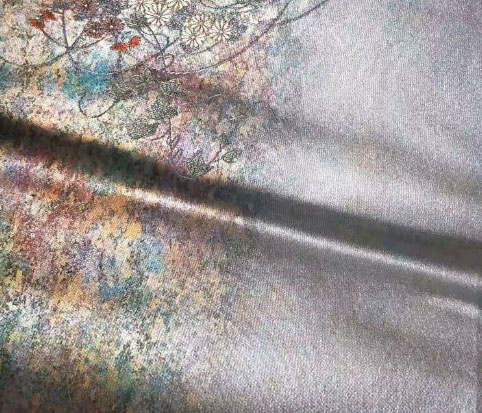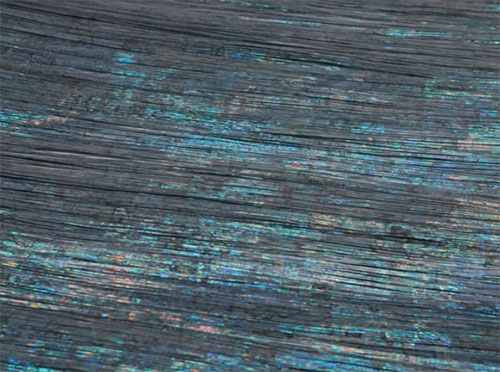 This type of traditional Japanese obi belts is very special because the cloth for it is hand-woven from silk threads and foil paper threads. Due to this, the fabric of hikihaku obi looks gorgeous and shiny, with a distinct metallic sheen. But how do they achieve this? How can they create fabric from foil? The process of making textile using the hikihaku technique is not simple, but there are Japanese artisans who know how to do it and produce this beautiful gleaming fabric these days.
This type of traditional Japanese obi belts is very special because the cloth for it is hand-woven from silk threads and foil paper threads. Due to this, the fabric of hikihaku obi looks gorgeous and shiny, with a distinct metallic sheen. But how do they achieve this? How can they create fabric from foil? The process of making textile using the hikihaku technique is not simple, but there are Japanese artisans who know how to do it and produce this beautiful gleaming fabric these days.
In Japan, many craftsmen and craftswomen who work with traditional techniques and folk clothing crafts descend from the families that pass this particular knowledge down many generations (sometimes more than 10 generations). It is very typical to have a small family business regarding an ancient folk craft and teaching your kids this art. These people learn all the secrets from an early age and deal with this particular craft for their whole lives. So, they’re usually very skilled in what they do. And such a rare craft as the hikihaku weaving technique requires a lot of skill.
What exactly is the hikihaku?
This traditional weaving technique uses metallic threads along with the usual silk threads. But unlike the silk yarn that can be purchased in Japan pretty easily, these metallic threads are made by the artisans themselves.
For that, they use various precious foils (gold, silver, platinum) cut into threads. But it’s nearly impossible to create such threads and work with them without a certain background material that will strengthen the foil. So, Japanese artisans use the local traditional washi paper, which is handmade as well. The foil is glued (using special adhesives) to a sheet of washi paper and only then cut into thin strips.
It takes a lot of accuracy and patience to work with such a delicate and costly material as gold, silver, and platinum foil thread. And even harder is to use them on a weaving loom. The metallic foil threads are used as the weft and ordinary threads as the warp on a loom.
Here’s a fragment of vintage hikihaku obi made from silver foil thread.

The Japanese obi made using the hikihaku weaving technique are extremely beautiful. They shine and reflect the light like they’re made from pure liquid metal. Truly wonderful!
Japanese mother-of-pearl obi
But metallic foil threads are not the only precious material that can be used to weave clothing. Japanese artisans also use the mother of pearl to create threads. Just imagine the look of a natural mother-of-pearl obi belt!
The technique is very similar. They use sheets of mother of pearl. But before cutting them into threads, you need to attach it to another material. Otherwise, the mother of pearl will break into pieces. So, the sheets of mother of pearl material are scrubbed until the shells are broken, and then these sheets are glued to black paper that will keep the particles of shells in place and enhance their shine. These sheets of black paper with mother of pearl particles glued to them are cut into threads and used to weave obi belts.

Cut mother-of-pearl threads before weaving
But the weaving of this fabric is very difficult. So as not to damage the surface, the weaver works with the back side of the cloth and uses a special mirror to see the front of the woven cloth on a loom.
But in the end, you can’t imagine how outstanding mother-of-pearl obi look like. They are strikingly unique and one-of-a-kind accessories.


